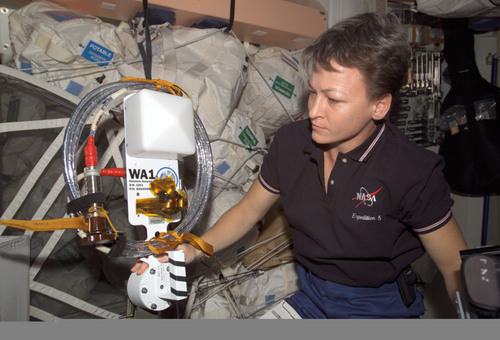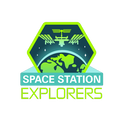Current status of ISS ham radio stationsStatus as of July 25, 2024
Columbus Module radio:
Service Module radio:
(Times subject to change) For up-to-the-minute reports of station status as reported by active hams around the world, refer to the ISS-FM and ISS-DATA lines on the AMSAT OSCAR Satellite Status page. |

Astronaut Peggy Whitson, Expedition 5 Flight Engineer, holds one of the Amateur Radio antennas prior to installation on the ISS. The antenna is one of a series of four which were clamped on handrails around the Russian Service Module (Svesda). This was done during two different EVA's conducted by Russian cosmonauts in January and in August 2002.
|

|
|
- Home
- News
- Intl Minutes
- Educational Contacts
-
Educational Resources
- SPACE Pioneers Amateur Radio Kit Initiative (SPARKI)
- Educational Partner Lessons: ARRL
- Educational Partner Lessons: European Space Agency
- Educational Partner Lessons: Estes Rockets
- Educational Partner Lessons: ISS National Laboratory Space Station Explorers
- Educational Partner Lessons: NASA
- Educational Videos
- Mid-Altitude Ballooning on ariss-usa website
- General Contacts
- Donate
- 40th Anniversary
- Site Map







